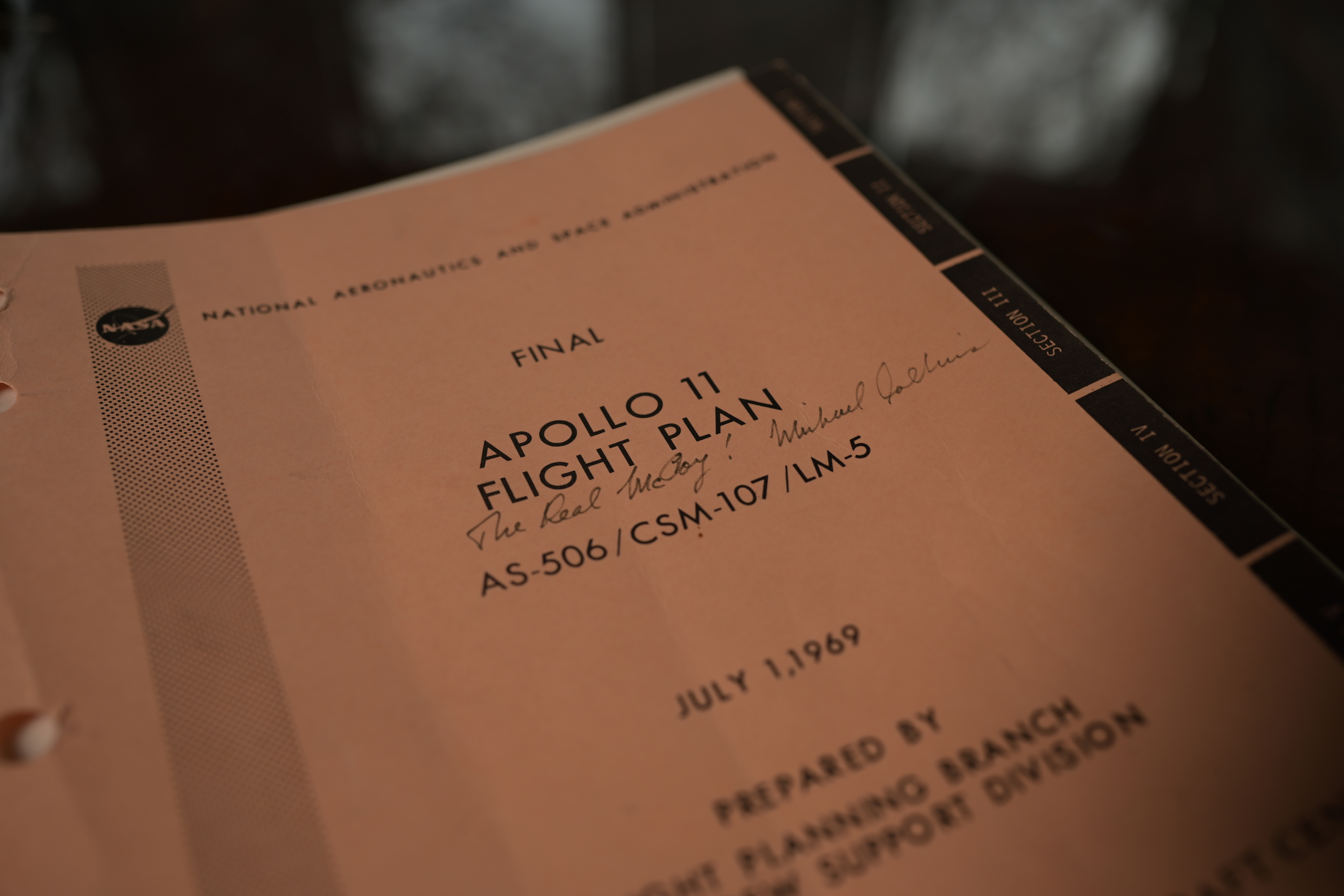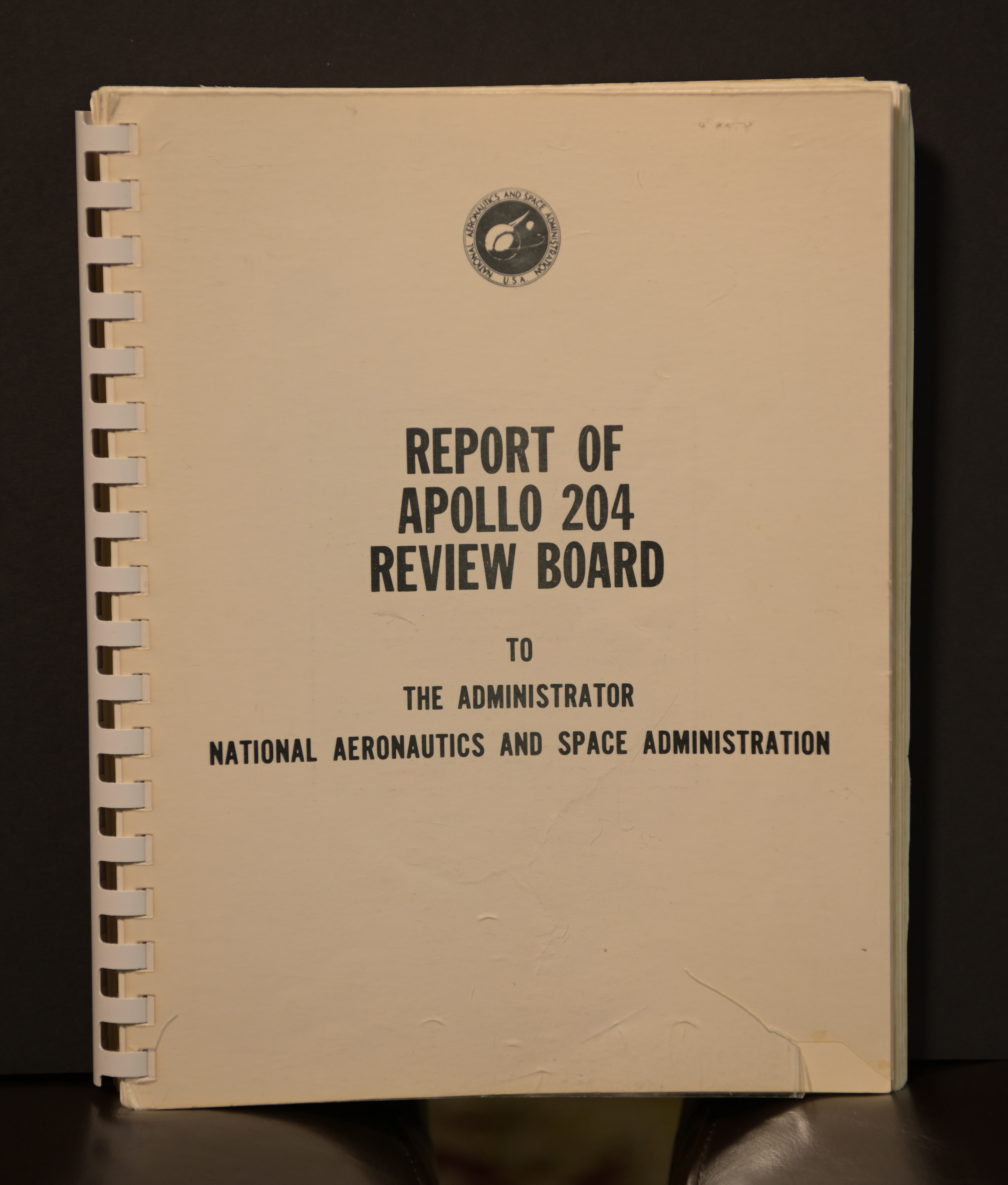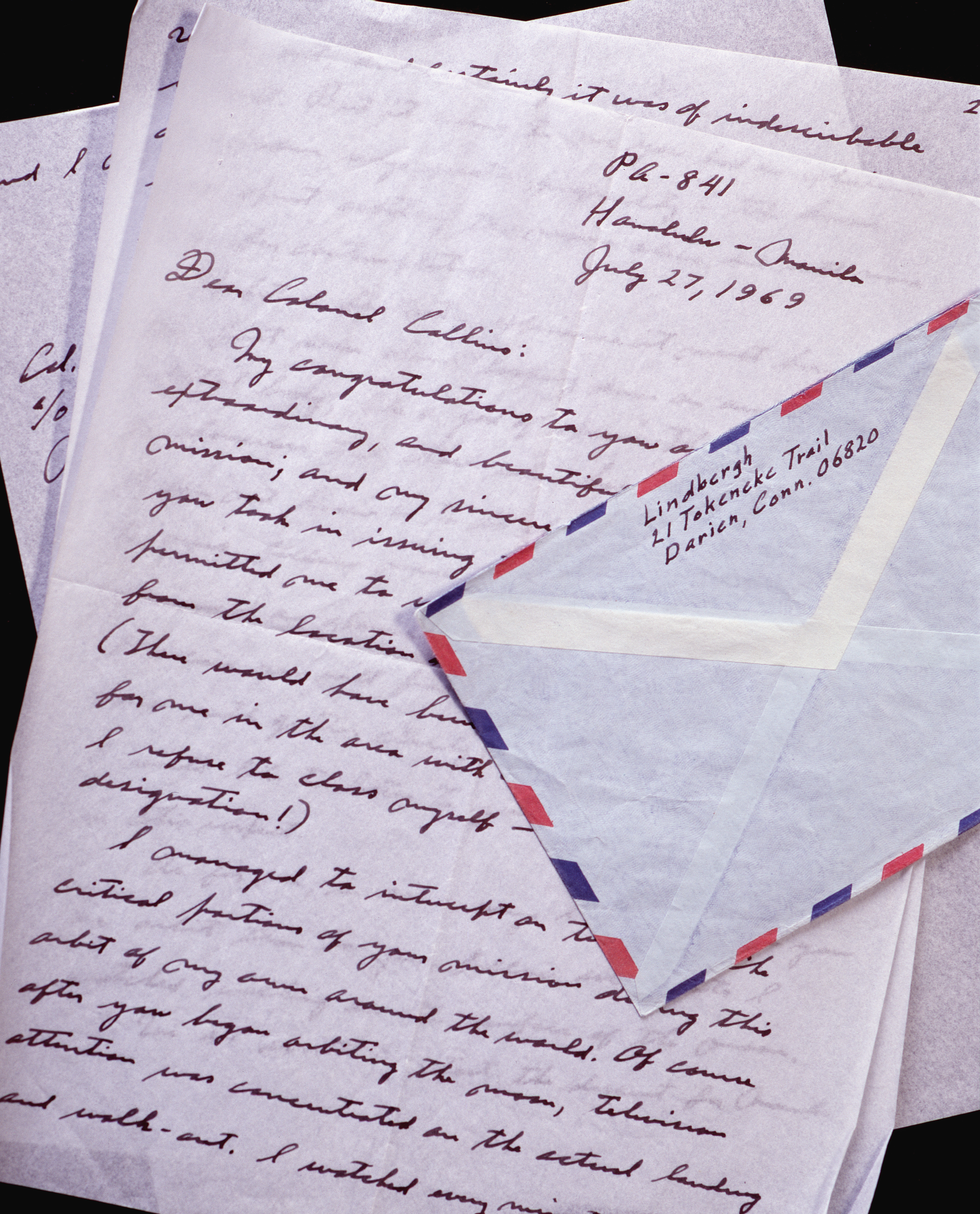Fold-out illustration from the Apollo 11 flight plan.
What would famed aviator Charles Lindbergh say to Apollo 11 astronaut and command module pilot Michael Collins?
Virginia Tech’s University Libraries Special Collections has the answer in the form of a letter penned just after the famed 1969 moon landing. It’s just one of thousands of space-related documents, photos, and artifacts in the library’s Archives of American Aerospace Exploration.

The college of engineering also received a gift of moon rocks, presented in 2006 by Christopher Kraft.
The archives comprise 32 separate manuscript collections, which range in size from 1 to 250 cubic feet of content. Materials donated by Virginia Tech graduate and NASA pioneer Christopher Kraft ’44 and the aforementioned Collins are among the most popular of these collections, said Marc Brodsky, public service and reference archivist for Special Collections.
The original signed and annotated Apollo 11 flight plan.
The availability of such unique primary sources has been extremely useful for Virginia Tech faculty, including Jared Gibbs, advanced instructor in the Department of English.
“I’ve seen a lot of students get excited by those materials and be more engaged just because it’s not what they expect out of an English class,” Gibbs said.
Gibbs has used the Collins collection as a vehicle for interesting students in a variety of creative and critical assignments. The items help bring the subject to life, while also breaking down some traditional education stereotypes.
“It gives us a chance to talk about what’s a primary source and what’s a secondary source, and it gives us a way to have that conversation and engage a whole range of material that makes it more real than just having a conversation in the classroom,” Gibbs said. “And given the volume of engineering students at Virginia Tech, it’s been particularly helpful in engaging students who might think, I’m not going to be interested in writing.”
Special Collections is located on the first floor of the Carol M. Newman Library and open to the public 8 a.m. to 5 p.m., Monday through Friday, with occasional exceptions due to weather or holidays.
Here’s just a small sample of the interesting items you can find there.
Apollo 11 flight plan

The plan for the flight that first landed humans on the moon in 1969. The detailed minute-by-minute instructions traveled with the crew into space and then orbited the moon with astronaut Michael Collins in the command module while the lunar surface was explored by fellow astronauts. Collins ensured the book’s authenticity by writing “The Real McCoy” and signing his name across its cover.
Apollo 1 accident report (Apollo 204)

The official report put together by the Apollo 204 Review Board for NASA after the cabin fire that occurred during a series of tests on Jan. 27, 1967. The incident killed all three crew members—Command Pilot Virgil I. “Gus” Grissom, Senior Pilot Ed White, and Pilot Roger B. Chaffee—and destroyed the command module. The mission, officially designated AS (Apollo Saturn) 204, is popularly known as Apollo 1.
X-15 Manned Research Vehicle media packet

The X-15 set speed and altitude records in the 1960s, including the standing record for the highest speed ever achieved by a crewed, powered aircraft—4,520 miles per hour. The vehicle reached the edge of outer space and returned with valuable data used in aircraft and spacecraft design. The press kits were distributed when the aircraft debuted on Oct. 15, 1958.
Charles Lindbergh’s letter to Michael Collins

Shortly after the 1969 moon landing, Lindbergh—known for the first solo, nonstop transatlantic flight in 1927—wrote Collins, who was the first person to orbit the moon alone while his fellow astronauts explored the surface. Lindbergh writes of their shared experience of flying alone and seeing below from a perspective previously never achieved.
Neil Armstrong’s book of commemorative Russian cards
The cards depict artist representations celebrating Soviet space missions from 1957 to 1968, beginning with the 1957 launch of Sputnik. The book was a gift to Neil Armstrong and contains a Russian inscription from a member of the Soviet space program.
